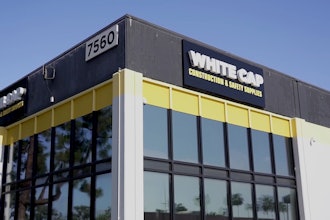WASHINGTON (AP) — Initial requests for jobless benefits rose last week to their highest level since April, a sign that hiring remains weak and some companies are still cutting workers.
The Labor Department said Thursday that new claims for unemployment insurance rose by 19,000 to a seasonally adjusted 479,000. Analysts had expected a small drop. Claims have risen twice in the past three weeks.
Some of the increase stemmed from difficulties the government has in adjusting for seasonal factors. The Labor Department expected a large decline in claims last week as many auto companies usually shut their plants temporarily in early July. Claims were expected to rise during the shutdown and then fall.
But this year General Motors and other manufacturers skipped the shutdowns, so claims didn't fall last week as much as expected.
Before seasonal adjustment, claims fell by about 14,250 to 399,570.
The seasonally adjusted four-week average of claims, which smooths out volatility, rose by 5,250 to 458,500.
Economists closely watch initial claims because they are considered a gauge of the pace of layoffs and an indication of employers' willingness to hire.
Applications for unemployment insurance have fluctuated between 450,000 and 480,000 all year, after declining steadily last year from a peak of 651,000 in March 2009. In a healthy economy with rapid hiring, claims usually fall below 400,000.
The tally of laid-off workers continuing to claim unemployment benefits fell by 34,000 to 4.54 million. That doesn't include an additional 3.9 million people receiving extended unemployment benefits paid for by the federal government.
During the recession, Congress added up to 73 weeks of extra benefits on top of the 26 weeks typically provided by states. Those extended benefits were interrupted in June when Republicans blocked an extension. But Congress has since reinstated the program through November.
The economy began growing last year and that growth accelerated in the winter and spring. It spurred some modest hiring, but not enough to rapidly reduce the unemployment rate, which is 9.5 percent.
Economists worry the recovery is slowing. Americans are spending cautiously as they save more and pay down debt. Home sales and construction have slumped after a popular homebuyers' tax credit expired on April 30. The impact of the federal government's stimulus efforts is fading.
More jobs are needed to give consumers more spending power to help support a sustainable recovery.
But it's not clear if the new jobs will come fast enough. On Friday, the Labor Department will issue the July jobs report and economists expect it will show the nation lost a net total of 65,000 jobs. That includes the end of about 150,000 temporary census jobs.
Excluding government employment, private companies are expected to add a net total of 90,000 jobs.


















